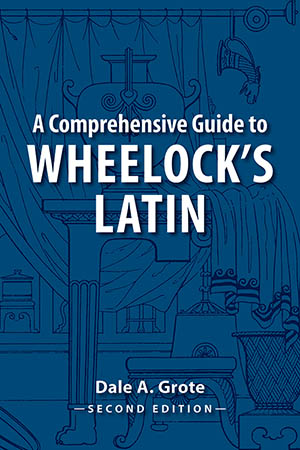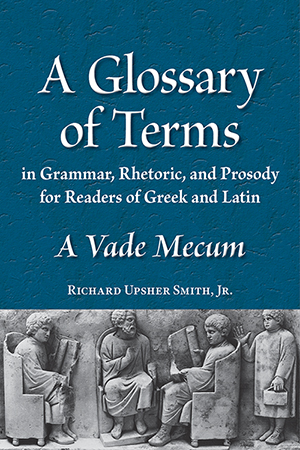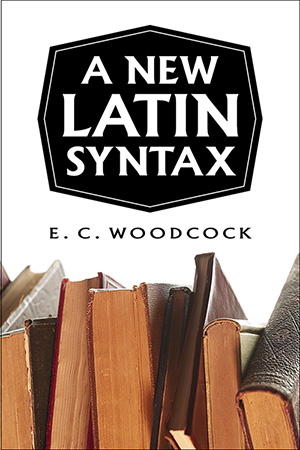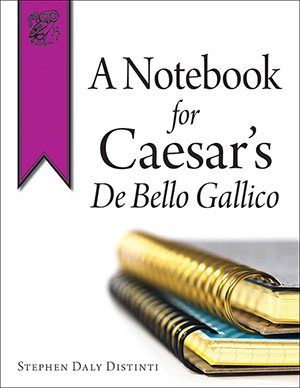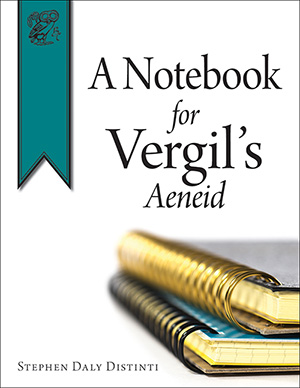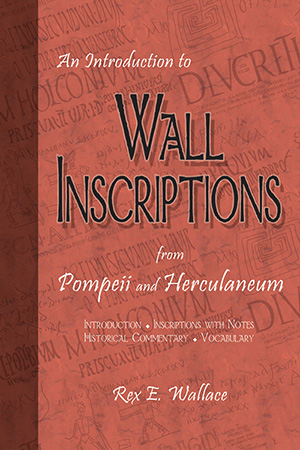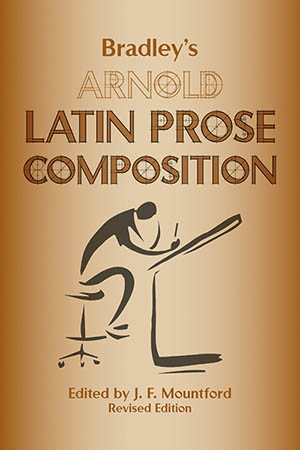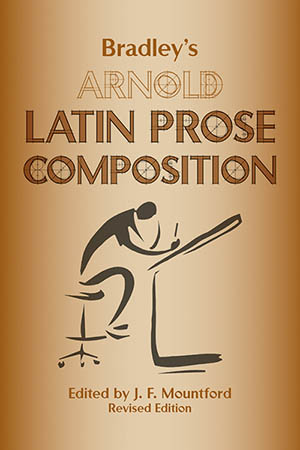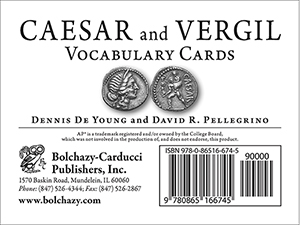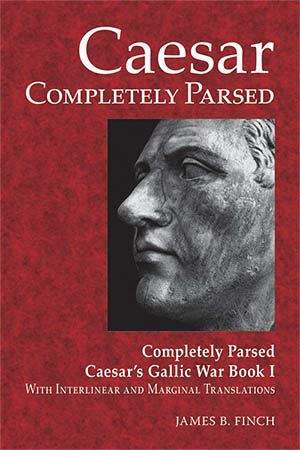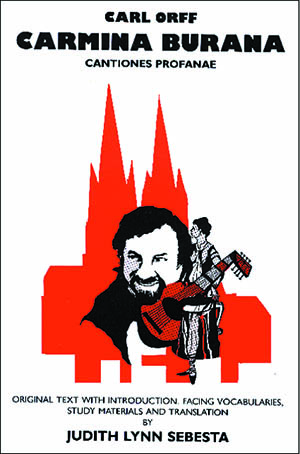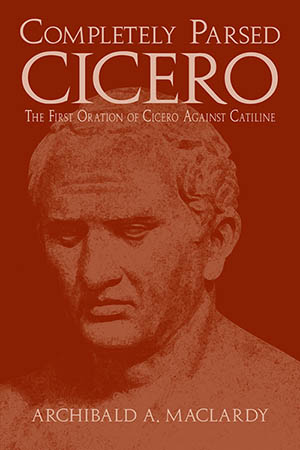A Comprehensive Guide to Wheelock's Latin: 2nd edition
- Author: Dale A. Grote
- 7737
- 978-0-86516-773-5
- Paperback
- 327
This study guide is designed to accompany the seventh edition of the Wheelock's Latin textbook, but can also be used as a review of beginning Latin.
A Glossary of Terms in Grammar, Rhetoric, and Prosody for Readers of Greek and Latin: A Vade Mecum
- Author: Richard Upsher Smith, Jr.
- 7591
- 978-0-86516-759-9
- 140
This book is a glossary of terms in grammar, rhetoric, and prosody that students of Greek and Latin commonly encounter in their first three years of study. While English grammar is the focus the links with Greek and Latin grammar are explained and some Greek and Latin constructions that do not occur in English are defined.
A New Latin Syntax
- Author: E.C. Woodcock
- 1267
- 978-0-86516-126-9
- Paperback
- Bolchazy-Carducci Publishers, Inc.
- 216
A Notebook for Caesar's De Bello Gallico
- Author: Stephen Daly Distinti
- 8261
- 978-0-86516-826-8
- Paperback
- Bolchazy-Carducci Publishers
- 208
This notebook does not match the current AP Latin curriculum, see the website product pages for the new AP Notebooks.
A Notebook for Pliny: 20 Letters and Suggested Companion Texts
A Notebook for Vergil: Selections and Suggested Companion Texts
A Notebook for Caesar’s De Bello Gallico provides students with a system for processing their homework and preparing their Latin assignment for in-class presentation. The complete Latin text for the AP® Latin Exam is triple-spaced to allow plenty of room for annotations. Below the Latin passage, students copy from their textbooks all the Latin vocabulary that they do not know. This changes the process of vocabulary building from one of passive recognition to active recall by creating personalized vocabulary lists for study. The facing page provides two blank lines keyed to the Latin text: one for the students’ home translations and one for corrections students note as the class shares translations. The second line allows students to make adjustments without erasing their mistakes. Doing so encourages students to become reflective learners who analyze and learn from their errors. The section below the translation, entitled “Additional Notes,” keeps class notes together with the Latin passage. At the end of each set of Latin passages from the individual De Bello Gallico books, students keep track of and review the major plot points for what they have read in Latin. Students also construct summaries of the English readings required by the AP® Latin curriculum on pages so designated.
A Notebook for Vergil's Aeneid
- Author: Stephen Daly Distinti
- 827X
- 978-0-86516-827-5
- Paperback
- Bolchazy-Carducci Publishers, Inc.
- 249
This notebook does not match the current AP Latin curriculum, see the website product pages for the new AP Notebooks.
A Notebook for Pliny: 20 Letters and Suggested Companion Texts
A Notebook for Vergil: Selections and Suggested Companion Texts
A Notebook for Vergil’s Aeneid provides students with a system for processing their homework and preparing their Latin assignment for in-class presentation. The complete Latin text for the AP® Latin Exam is triple-spaced to allow plenty of room for annotations. Below the Latin passage, students copy from their textbooks all the Latin vocabulary that they do not know. This changes the process of vocabulary building from one of passive recognition to active recall by creating personalized vocabulary lists for study. The facing page provides two blank lines keyed to the Latin text: one for the students’ home translations and one for corrections students note as the class shares translations. The second line allows students to make adjustments without erasing their mistakes. Doing so encourages students to become reflective learners who analyze and learn from their errors. The section below the translation, entitled “Additional Notes,” keeps class notes together with the Latin passage. At the end of each set of Latin passages from the individual books of the Aeneid, students keep track of and review the major plot points for what they have read in Latin. Students also construct summaries of the English readings required by the AP® Latin Curriculum on pages so designated.
An Introduction to Wall Inscriptions from Pompeii and Herculaneum
- Author: Rex E. Wallace
- 570X
- 978-0-86516-570-0
- 136
This edition is a representative selection of the various types of inscriptions, from political manifestos to gladiatorial announcements, found in the ancient Roman cities of Pompeii and Herculaneum. These inscriptions, painted and incised on the walls of public and private buildings, document aspects of daily life in the first century CE. Inscriptions, particularly graffiti, were often written by less educated members of society, and as such provide a rare glimpse of common Latin.
Bradley's Arnold : Latin Prose Composition
- Editor: J. F. Mountford
- 6609
- 978-0-86516-660-8
- Hardcover
- Bolchazy-Carducci Publishers
- 456
A revised and typeset edition of one of the most popular textbooks used for review of grammar and for writing Latin composition.
Bradley's Arnold: Latin Prose Composition
- Editor: J. F. Mountford
- 5955
- 978-0-86516-595-3
- Paperback
- Bolchazy-Carducci Publishers
- 450
A revised and typeset edition of one of the most popular textbooks used for review of grammar and for writing Latin composition.
Caesar & Vergil AP* Vocabulary Cards
- 6749
- 978-0-86516-674-5
- Flash Cards
All vocabulary appearing five or more times in Vergil and Caesar AP* selections is included in these 501 cards. Cards come on high quality precut card stock. Prepunched holes and a ring make these study aids easy to take anywhere.
Caesar Completely Parsed: Completely Parsed Caesar's Gallic War Book I
- Author: James B. Finch
- 6323
- 978-0-86516-632-5
- Paperback
- 400
Caesar Completely Parsed is a primary resource for educators teaching or reading Book I of the De Bello Gallico. A reprint of Completely Parsed Caesar: Gallic War, Book I (1898), this book contains the complete text of De Bello Gallico, Book I; an interlinear translation; and an accompanying, more polished translation are just part of this reference work. At the bottom of each page below the text, each Latin word is completely parsed and the commentary includes useful references to the revised grammars of Bennett, Gildersleeve, Allen and Greenough, and Harkness and delves into word derivations and word frequencies, making this volume helpful for the competent reader of Latin as well as the novice.
Carmina Burana Cantiones Profanae
- Translator: Judith Lynn Sebesta
- 2689
- 978-0-86516-268-6
- Paperback
- 165
Carl Orff's 24 selections from the 200 beloved medieval poems of the Carmina Burana celebrate the universal range of human emotion and experience: passion, longing, exuberance, humor, rebellion, ennui, and resignation. Now tender, now tragic; secular, yet reverent; the poems of the Carmina touch the chords of our purest and darkest spirituality. An excellent resource for the student, the performer, the audience, and the general reader.
Completely Parsed Cicero: The First Oration of Cicero Against Catiline
- Author: Archibald A. MaclardyIntroduction: Steven M. Cerutti
- 5904
- 978-0-86516-590-8
- Paperback
- 285
Completely Parsed Cicero is an irreplaceable, primary resource for educators. The complete text of In Catilinam I, an interlinear translation, and an accompanying, more polished translation are just part of this goldmine. At the bottom of each page below the text, each Latin word is completely parsed and the commentary includes useful references to the revised grammars of Bennett, Gildersleeve, Allen and Greenough, and Harkness and delves into word derivations and word frequencies, making this volume helpful for the competent reader of Latin as well as the novice.

